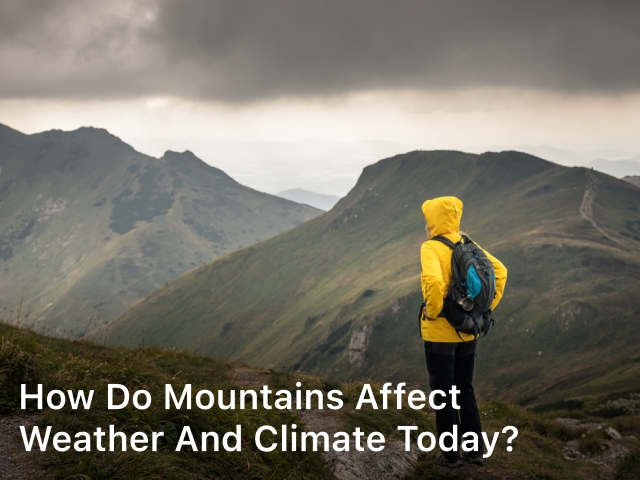
greentechinnovate.com. How to Survive a Fire Tornado? – Learn how to survive a fire tornado with expert tips and insights. Discover the essential steps to protect yourself and your loved ones.
Fire tornadoes, also known as fire whirls, are terrifying natural phenomena that can strike with little warning. These powerful whirlwinds of flame and smoke can cause devastation in their path.
In this comprehensive guide, we will equip you with the knowledge and strategies needed to survive a fire tornado. Your safety is our top priority, so let’s dive into the essential steps and precautions you should take when facing this formidable force of nature.
What is Fire Tornado?
A fire tornado, also known as a firenado or fire whirl, is a rare and extremely dangerous meteorological phenomenon that occurs when a fire combines with strong winds to create a swirling vortex of flames. It’s essentially a tornado made of fire.
Fire tornadoes typically form during wildfires when intense heat and rising air currents interact with the surrounding wind patterns. The fire generates an updraft, and if the conditions are right, the spinning column of air can become vertically oriented, resulting in a rotating, funnel-like structure. This swirling column of fire can reach great heights and produce a spectacular and terrifying sight.
Fire tornadoes are exceptionally dangerous due to their unpredictable behavior and extreme heat. They can spread fire rapidly, increase the intensity of a wildfire, and pose a significant threat to firefighters and anyone in their path.
In some cases, fire tornadoes have been known to toss debris, including burning embers, over long distances, further exacerbating the fire’s spread.
Efforts to study and understand fire tornadoes are ongoing, as predicting and mitigating their impact is crucial for wildfire management and public safety.

Are Fire Tornadoes Dangerous?
Yes, fire tornadoes are extremely dangerous. They pose significant risks to both people and property. Here are some reasons why fire tornadoes are so perilous:
- Intense Heat: Fire tornadoes generate extremely high temperatures, making them a major threat to anything in their path. The intense heat can cause burns, ignite flammable materials, and make firefighting efforts extremely challenging.
- Rapid Spread of Fire: Fire tornadoes can spread wildfires at an alarming rate. They can pick up burning debris and embers and carry them over long distances, creating new ignition points and making the fire’s spread even more unpredictable and rapid.
- Unpredictable Behavior: Fire tornadoes are known for their erratic and unpredictable behavior. They can change direction suddenly, making it difficult for firefighters and emergency responders to anticipate their movements and take appropriate action.
- Hazardous Conditions: Fire tornadoes are often associated with extreme fire conditions, including strong winds and dry vegetation. These conditions can create a dangerous environment for firefighting and evacuation efforts.
- Limited Escape Options: When fire tornadoes occur, they can block escape routes and make it challenging for people to evacuate safely. This can lead to potentially life-threatening situations for those in the vicinity of the fire tornado.
- Impact on Firefighters: Firefighters battling wildfires with fire tornadoes are at increased risk due to the extreme conditions. They must take extra precautions to protect themselves while trying to contain the fire and keep it from spreading.
Overall, fire tornadoes are a severe hazard during wildfires, and efforts to monitor, predict, and manage them are critical to safeguarding lives and property. Public awareness and adherence to evacuation orders and safety guidelines are also essential when dealing with these dangerous phenomena.
How to Survive a Fire Tornado
Before delving into survival tactics, it’s crucial to comprehend what a fire tornado is. A fire tornado is a rare and deadly occurrence, typically resulting from the combination of intense heat, wind, and wildfires. These phenomena can reach incredible heights and temperatures, making them extremely dangerous.
Preparing for the Worst
Surviving a fire tornado begins with thorough preparation.
- Stay Informed: Monitor weather conditions and wildfire reports in your area. Early awareness is your best defense.
- Emergency Kit: Assemble an emergency kit that includes essential supplies like non-perishable food, water, a first-aid kit, flashlights, and batteries.
- Evacuation Plan: Develop a clear evacuation plan with your family. Designate a meeting point and ensure everyone knows the escape routes from your home.
- Protective Gear: Invest in fire-resistant clothing, goggles, and masks. These items can provide critical protection in the event of a fire tornado.
- Fireproof Your Home: Implement fire-resistant measures around your property, such as installing fire-resistant roofing and clearing debris from gutters.
During a Fire Tornado
When you find yourself in the midst of a fire tornado, it’s essential to remain calm and follow these life-saving steps:
- Seek Shelter: Find a sturdy structure or a low-lying area to take cover. Avoid open spaces.
- Stay Low: If you’re caught outdoors, stay as close to the ground as possible to minimize exposure to heat and smoke.
- Cover Up: Use your fire-resistant clothing and any available materials to shield yourself from heat and flames.
- Breathe Safely: Use a mask or cloth to cover your nose and mouth to filter out smoke and debris.
- Stay Hydrated: Conserve water but stay hydrated to prevent heat exhaustion.
- Stay Informed: Keep a battery-powered radio or smartphone with you to receive updates and instructions.
After the Fire Tornado
Surviving the immediate impact of a fire tornado is just the beginning. After the danger has passed, take these steps:
- Check for Injuries: Assess yourself and others for injuries. Administer first aid if necessary.
- Notify Authorities: Report your location to authorities and let them know if you need assistance.
- Assist Others: Help neighbors and community members who may require aid.
- Avoid Damaged Areas: Stay away from damaged structures and hazardous materials.
- Seek Medical Attention: Even if you don’t appear injured, it’s advisable to seek medical attention due to potential smoke inhalation.
- Contact Loved Ones: Reconnect with family and friends to let them know you’re safe.
What causes the fire tornado?
A fire tornado, also known as a firenado or fire whirl, is primarily caused by a combination of specific weather and fire conditions. Here are the key factors that contribute to the formation of a fire tornado:
- Wildfire: The initial requirement for a fire tornado is the presence of a wildfire. This wildfire generates intense heat, flames, and rising air currents, which are essential components for the formation of a fire tornado.
- Strong Winds: Fire tornadoes are often associated with strong and erratic winds. These winds can be a result of the wildfire itself, as the intense heat creates updrafts and downdrafts, causing air to circulate in unpredictable ways.
- Vortex Formation: When a wildfire produces extreme heat and convective updrafts, it can create a spinning column of rising hot air. This column of air can become vertically oriented and start to rotate, forming the basis of the fire tornado.
- Convergence: The spinning column of hot air in the presence of strong winds can lead to convergence, where air is drawn into the rotating column. This further intensifies the spinning motion, similar to how a tornado forms in a thunderstorm.
- Fuel Sources: Fire tornadoes can be fueled by flammable materials in the vicinity. This includes trees, vegetation, buildings, or any other combustible materials that the fire and wind can pick up and ignite, adding to the flames within the tornado.
- Topography: The local topography, such as hills, valleys, or canyons, can influence the behavior of the fire and the wind patterns. These factors can contribute to the development of fire tornadoes in specific geographic locations.
It’s important to note that fire tornadoes are relatively rare and occur under specific conditions. Not all wildfires produce fire tornadoes, and their formation is influenced by a complex interplay of weather, fire behavior, and terrain.
Researchers and firefighting agencies continue to study fire tornadoes to better understand their dynamics and improve wildfire management and safety measures.
FAQs
Can fire tornadoes be predicted?
Fire tornadoes are challenging to predict accurately. They often occur during wildfires and can develop suddenly, making it crucial to stay informed about wildfire conditions in your area.
What should I do if I’m caught outdoors during a fire tornado?
If you’re outdoors during a fire tornado, seek the lowest, most sheltered area you can find. Protect yourself with any fire-resistant materials you have, and stay as low as possible to the ground.
Do fire-resistant clothes really make a difference?
Yes, fire-resistant clothing can provide vital protection. It can shield you from the intense heat and flames of a fire tornado, increasing your chances of survival.
How can I protect my pets during a fire tornado?
Include your pets in your evacuation plan. Ensure they have collars with identification and have carriers or leashes ready for quick transport. Never leave your pets behind.
Are fire-resistant roofs worth the investment?
Absolutely. Fire-resistant roofing materials can significantly reduce the risk of your home catching fire during a wildfire or fire tornado, providing invaluable protection for you and your property.
What should I do if I can’t evacuate in time?
If you’re unable to evacuate before a fire tornado strikes, seek refuge in a fire-resistant shelter or a body of water if no other options are available. Cover yourself with any fire-resistant materials you can find.
Conclusion
Surviving a fire tornado is a daunting challenge, but with the right knowledge and preparation, you can greatly increase your chances of coming through it safely. Remember to stay informed, plan ahead, and always prioritize safety.
By following these guidelines, you’ll be better equipped to face the unexpected and protect yourself and your loved ones from this formidable force of nature.




